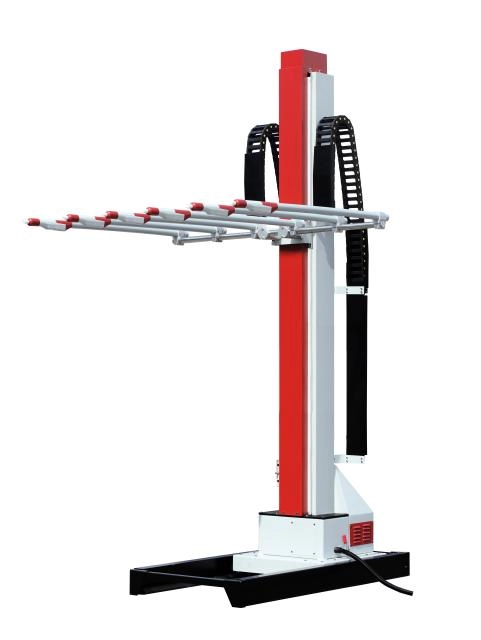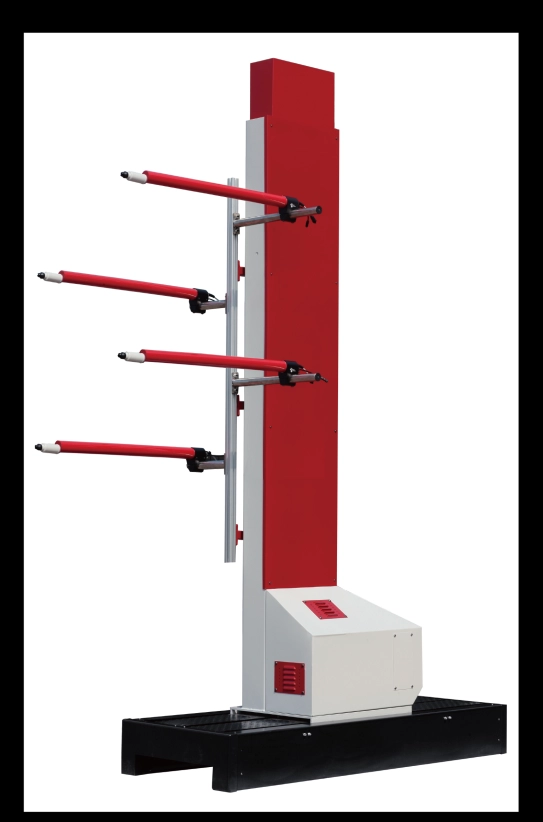Content Menu
● Understanding Electrostatic Spray Technology
>> How Electrostatic Charging Enhances Coating Performance
● Key Features of a High-Performance Manual Electrostatic Spray Gun
>> 1. Adjustable Spray Pattern and Fan Control
>> 2. Ergonomic Design and Operator Comfort
>> 3. Stable and Consistent Electrostatic Output
>> 4. Material Compatibility and Fluid Handling
>> 5. High Transfer Efficiency and Low Overspray
>> 6. Easy Maintenance and Cleaning
>> 7. Durability and Build Quality
>> 8. Integration with Automation and Monitoring Systems
● Performance Metrics That Define High-End Electrostatic Spray Guns
>> Atomization Quality and Finish Smoothness
>> Coating Uniformity and Film Thickness Control
>> Response Time and Trigger Sensitivity
>> Energy Efficiency and Operating Costs
● Safety Considerations in Electrostatic Spraying
>> Grounding and Static Discharge Protection
>> Explosion-Proof and ATEX Compliance
>> Operator Training and Protective Equipment
● Environmental and Regulatory Advantages
● Choosing the Right Brand and Support Network
● Future Trends in Manual Electrostatic Spray Technology
● Conclusion
● Frequently Asked Questions (FAQs)
In modern industrial coating applications, achieving uniform, durable, and efficient paint finishes is critical across sectors such as automotive, furniture, metal fabrication, and appliance manufacturing. Among the various spraying technologies available, manual electrostatic spray guns have emerged as a preferred choice due to their superior transfer efficiency, reduced overspray, and consistent finish quality. These tools utilize electrostatic charges to attract paint particles to grounded surfaces, significantly improving coating adhesion and material utilization.
For manufacturers and coating professionals, selecting the right manual electrostatic spray gun is not just about brand reputation—it's about identifying the top features that define high performance, reliability, and long-term cost savings. This article explores the essential characteristics to consider when choosing a high-performance manual electrostatic spray gun, helping you make an informed decision that aligns with your production goals and quality standards.

Understanding Electrostatic Spray Technology
Before diving into the key features, it's important to understand how manual electrostatic spray guns work. These devices apply a high-voltage electrostatic charge to paint particles as they exit the spray nozzle. The charged particles are then attracted to the grounded workpiece, creating a “wrap-around” effect that coats not only the front-facing surfaces but also the edges and back sides to some extent.
This principle dramatically increases transfer efficiency—often reaching 80% or higher—compared to conventional air spray methods, which typically achieve only 30–40% efficiency. The result is less wasted paint, reduced environmental impact, and lower operational costs over time.
How Electrostatic Charging Enhances Coating Performance
The electrostatic charge ensures that paint particles are drawn evenly across the surface, minimizing runs, sags, and dry spots. This is particularly beneficial when coating complex geometries or parts with recessed areas. Additionally, the even distribution reduces the need for multiple passes, speeding up production cycles.
Modern manual electrostatic spray guns use either corona charging or tribo charging methods. Corona systems apply high voltage directly at the nozzle, while tribo guns charge the paint through friction within the gun's internal lining. Each method has its advantages: corona charging offers high efficiency with a wide range of materials, while tribo charging produces a softer spray pattern ideal for fine finishes and reduced back-ionization on sharp edges.
Key Features of a High-Performance Manual Electrostatic Spray Gun
When evaluating manual electrostatic spray guns, several performance-critical features should guide your selection. These include spray pattern control, ergonomics, voltage stability, material compatibility, and ease of maintenance.
1. Adjustable Spray Pattern and Fan Control
A high-performance electrostatic spray gun must offer precise control over the spray pattern. Look for models with independent adjustments for air cap settings, fluid flow, and air pressure, allowing operators to fine-tune the fan width and shape for different part sizes and coating requirements.
Advanced models feature dual-air controls that separate shaping air from atomizing air, enabling superior finish quality. This level of control is essential for achieving consistent film thickness and minimizing touch-ups.
2. Ergonomic Design and Operator Comfort
Since manual spray guns are used for extended periods, ergonomics play a crucial role in operator productivity and safety. A well-designed gun should be lightweight, well-balanced, and feature a comfortable grip with minimal vibration.
Rubberized handles, low trigger pull force, and a compact design reduce hand fatigue during long shifts. Some premium models also integrate anti-vibration technology and heat-resistant materials to enhance comfort in high-temperature environments.
3. Stable and Consistent Electrostatic Output
The effectiveness of an electrostatic spray gun depends heavily on the stability of its charging system. A high-performance model should deliver consistent voltage output across varying environmental conditions, such as humidity and temperature fluctuations.
Look for guns with built-in voltage regulation and real-time feedback systems that monitor charge levels and adjust automatically. This ensures uniform particle charging and prevents issues like back-ionization, which can cause surface defects such as pinholes or orange peel.
4. Material Compatibility and Fluid Handling
Different coatings—such as solvent-based paints, waterborne finishes, powders, and UV-curable resins—require specific fluid handling capabilities. A versatile electrostatic spray gun should support a wide range of viscosities and be compatible with various chemical formulations.
Stainless steel fluid passages, chemical-resistant seals, and interchangeable fluid nozzles enhance durability and reduce contamination risks. For waterborne coatings, ensure the gun is designed to prevent corrosion and electrical leakage, which can compromise performance and safety.
5. High Transfer Efficiency and Low Overspray
One of the primary advantages of electrostatic spraying is high transfer efficiency, meaning more paint reaches the target surface. A top-tier manual electrostatic spray gun should achieve at least 75–85% transfer efficiency, reducing material waste and lowering VOC emissions.
Features such as optimized electrode placement, precision air channels, and low-pressure atomization contribute to reduced overspray. This not only saves on paint costs but also improves workplace air quality and reduces cleanup time.
6. Easy Maintenance and Cleaning
Downtime for cleaning and maintenance can significantly impact production efficiency. Therefore, a high-performance spray gun should be designed for quick disassembly, easy cleaning, and minimal part replacement.
Look for models with tool-free nozzle removal, self-cleaning air caps, and modular internal components. These features allow for fast changeovers between colors or materials and reduce the risk of clogs or blockages.
Additionally, some advanced guns come with diagnostic indicators that alert operators to wear or contamination, enabling preventive maintenance before performance degrades.
7. Durability and Build Quality
Industrial environments demand rugged equipment. A reliable manual electrostatic spray gun should be constructed from high-grade aluminum alloys, stainless steel, and industrial-grade polymers that resist wear, corrosion, and impact damage.
Sealed electronics, waterproof connectors, and IP-rated enclosures protect internal components from moisture and dust, ensuring long-term reliability even in harsh conditions.
8. Integration with Automation and Monitoring Systems
While manual spray guns are operator-driven, many modern models support integration with digital control systems. Features such as remote parameter adjustment, usage tracking, and performance logging enable better process control and quality assurance.
Some systems allow operators to save preset spray profiles for different jobs, ensuring consistency across batches. Integration with SCADA or MES platforms also facilitates data-driven decision-making and predictive maintenance.
Performance Metrics That Define High-End Electrostatic Spray Guns
Beyond physical features, performance metrics are essential for evaluating the true value of a manual electrostatic spray gun. These include atomization quality, coating uniformity, response time, and energy efficiency.
Atomization Quality and Finish Smoothness
Superior atomization breaks paint into fine, uniform droplets, resulting in a smooth, professional finish. High-performance guns use precision air channels and optimized nozzle designs to achieve micron-level droplet control.
The ability to maintain consistent atomization at low air pressures is a hallmark of advanced models, reducing noise and air consumption while improving finish quality.
Coating Uniformity and Film Thickness Control
Consistent film thickness is critical for both appearance and performance, especially in protective coatings. Electrostatic spray guns with stable charge output and precise fluid delivery ensure even coverage across large or complex surfaces.
Some models include laser-guided alignment or smart sensors that monitor distance and angle, providing real-time feedback to the operator for optimal results.
Response Time and Trigger Sensitivity
Fast response time ensures that paint flow starts and stops instantly when the trigger is pulled or released, preventing drips and wasted material. High-end guns feature low-inertia fluid valves and high-speed solenoids for immediate response.
Trigger sensitivity should be adjustable to match operator preference, reducing fatigue and improving control during detailed work.
Energy Efficiency and Operating Costs
While electrostatic spray guns consume electricity for charging, the most efficient models minimize power usage without sacrificing performance. Look for units with energy-saving modes, low standby consumption, and high-efficiency power supplies.
When combined with high transfer efficiency, these features contribute to significant long-term cost savings in paint, labor, and environmental compliance.
Safety Considerations in Electrostatic Spraying
Safety is paramount when working with high-voltage equipment and flammable materials. A high-performance manual electrostatic spray gun must incorporate multiple safety features to protect operators and facilities.
Grounding and Static Discharge Protection
Proper grounding of both the workpiece and the spray gun is essential to prevent static buildup and potential sparks. High-quality guns include automatic grounding detection that disables spraying if the ground connection is lost.
Insulated triggers, shielded cables, and intrinsically safe designs further reduce the risk of electrical hazards.
Explosion-Proof and ATEX Compliance
In environments where flammable solvents or powders are used, the spray gun must meet ATEX or IECEx standards for explosive atmospheres. Look for certifications indicating that the equipment is safe for use in Zone 1 or Zone 2 hazardous areas.
Explosion-proof housings, spark-resistant materials, and temperature monitoring systems are standard in compliant models.
Operator Training and Protective Equipment
Even the best equipment requires proper handling. Operators should be trained in electrostatic safety protocols, including grounding procedures, emergency shutdowns, and personal protective equipment (PPE) usage.
Employers should provide anti-static clothing, face shields, and respiratory protection to ensure a safe working environment.
Environmental and Regulatory Advantages
Adopting high-performance manual electrostatic spray guns aligns with growing environmental regulations and sustainability goals. By reducing paint waste and VOC emissions, these tools help companies comply with EPA, REACH, and ISO 14001 standards.
Lower overspray means less filtration load on spray booths, reducing energy consumption and filter replacement frequency. Additionally, waterborne coating compatibility supports the shift toward low-VOC and eco-friendly formulations.
Many manufacturers now offer recyclable components and energy-efficient power supplies, further enhancing the environmental profile of modern electrostatic spray systems.
Choosing the Right Brand and Support Network
While technical specifications are crucial, the reputation of the manufacturer and the availability of technical support should not be overlooked. A reliable supplier offers:
- Comprehensive training programs
- Global service and repair networks
- Warranty coverage and spare parts availability
- Software updates and firmware upgrades
Leading brands invest heavily in R&D to continuously improve performance, safety, and usability. Customer reviews, industry certifications, and third-party testing can help validate claims and ensure long-term satisfaction.
Future Trends in Manual Electrostatic Spray Technology
The future of electrostatic spraying is shaped by advancements in smart manufacturing, IoT integration, and artificial intelligence. Emerging trends include:
- AI-powered spray optimization that adjusts parameters in real time based on surface geometry and environmental conditions
- Wearable sensors that monitor operator posture and fatigue to improve ergonomics
- Cloud-based performance analytics for fleet management and predictive maintenance
- Hybrid systems that combine electrostatic and airless spraying for maximum efficiency
As Industry 4.0 continues to transform manufacturing, manual electrostatic spray guns will evolve into intelligent tools that enhance both productivity and quality.

Conclusion
Selecting a high-performance manual electrostatic spray gun requires careful evaluation of multiple factors, including spray control, ergonomics, charging stability, material compatibility, and safety. The right tool not only improves finish quality and transfer efficiency but also reduces operational costs and environmental impact.
By prioritizing features such as adjustable fan patterns, durable construction, easy maintenance, and integration capabilities, manufacturers can achieve superior coating results and maintain a competitive edge in the market. As technology advances, the integration of smart systems and sustainable practices will further elevate the role of electrostatic spraying in modern industrial applications.
Frequently Asked Questions (FAQs)
Q1: What is the main advantage of using a manual electrostatic spray gun?
The primary advantage is high transfer efficiency—typically 75–85%—which reduces paint waste, lowers material costs, and minimizes environmental impact compared to conventional spray methods.
Q2: Can manual electrostatic spray guns be used with water-based paints?
Yes, but only if the gun is specifically designed for waterborne coatings, with corrosion-resistant materials and proper electrical insulation to prevent leakage and ensure safety.
Q3: How often should an electrostatic spray gun be cleaned?
It should be cleaned after each use or color change to prevent clogs and contamination. Daily or weekly maintenance schedules depend on usage intensity and coating type.
Q4: What is the difference between corona and tribo charging in electrostatic spray guns?
Corona charging uses high voltage at the nozzle to charge paint particles, while tribo charging relies on friction within the gun's lining. Tribo systems produce a softer spray and are less prone to back-ionization on sharp edges.
Q5: Are electrostatic spray guns safe to use in explosive environments?
Yes, if they are certified for hazardous locations (e.g., ATEX or IECEx compliant). These models include explosion-proof housings and safety interlocks to prevent ignition risks.
Hot Tags: China, Global, OEM, private label, manufacturers, factory, suppliers, manufacturing company










































 .
. 